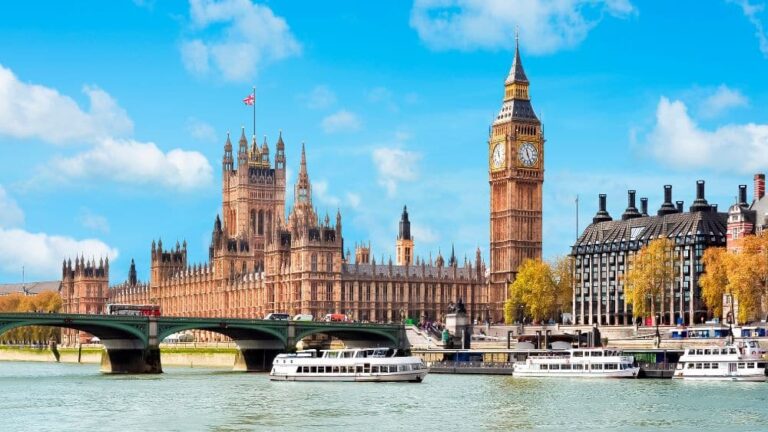
Autumn Budget overview 2025
Rachel Reeves bets on the future
Follow this link to read ‘What the Budget means for unincorporated businesses’
Rachel Reeves bets on the future
The next general election must be held by 15 August 2029, which is three years and nine months away. The financial forecasts released alongside today’s Budget cover 2025/26 through to 2030/31, a period of five years and four months. Guess when the tax rises announced today happen? Yep, in that period between the next general election date and the end of the forecast period.
It’s an old budgeting trick and you’d expect an accountant to be concerned by it. I’m slightly unkind in my opening paragraph as the tax rises significantly kick in from April 2029. The tax year 2028/29 is more or less break-even, with more net spending announced in the rest of this tax year, next year and in 2027/28. I’m finding it hard to reconcile this with the rhetoric that we have been exposed to by the government over the last few months.
Additional tax revenue raise
I’ll leave commentary on government spending to others. The additional tax revenue that is forecast in the “Economic and fiscal outlook” of the Office for Budget Responsibility (OBR) is as follows:
| Measure | Amount
Raised £bn |
Degree of uncertainty of income | Start date |
| Continuing freeze of tax thresholds | 24.2 | – | 2028 |
| Increase in income tax rates on savings & property | 7.8 | – | 2027 |
| Collecting more tax revenue based on existing rules | 7.2 | – | Now |
| Restricting salary sacrifice for pension contributions | 7.1 | – | 2029 |
| Restricting relief on capex by unincorporated businesses | 7.0 | – | Next year |
| Freezing fuel duty (lost tax revenue) | (5.9) | – | Next year |
| Gambling duty reform | 5.3 | – | Next year |
| Electric cars mileage charge | 4.4 | High | 2028 |
| Restricting relief for employee ownership trusts (EOTs) | 3.7 | Very high | Next year |
| Other tax raising measures | 17.1 | High | Now |
| 77.9 |
There isn’t much of a surplus of tax revenue raised over additional expenditure across the forecast period – around £6bn to £14bn depending on whether indirect impacts are taken into account. What’s clear from the above is that the position is highly uncertain. New tax revenue streams are unpredictable and it’s all a few years away. Will it ever happen as forecast? – probably not.
The Chancellor has increased the buffer against her fiscal rules in these forecasts, which is confusingly measured in 2029/30 rather than at the end of the forecast period.
The annual deficit – how is the government funding the debt?
The annual deficit currently continues to be very large and that needs funding. The government is funding this debt with increasingly shorter dated gilts (government bonds). This is encouraged by the fact that short-term interest rates are better than longer-term interest rates. Broadly, do you fix your mortgage for two years or five years if the two-year rate is much better than the five-year rate? It’s a punt. You might hope that longer-term interest rates improve. The risk is that longer-term interest rates increase further and that you have to re-finance at a bad time. It’s a bet.
What could be in the ‘Other taxes’ raised?
You will also have noticed that the other tax raising measures is a big number. There are lots and lots of documents setting out tax changes that as I write have still not all been released. This Budget will be remembered for the early release of the OBR document, but tax professionals are likely to remember it for trying to find documents as the government has adopted a new system of releasing information on tax changes this year.
Initial takeaways
There are a large number of very niche changes that could impact significantly on certain clients but are unfair to subject a wider audience to in an overview on the Budget. Given the expectations on major tax changes in the kite flying that we’ve had since the Summer the detail is unexciting by comparison and yet could still have a major impact for a client. The need to get good advice remains.
Here are some initial takeaways on the tax measures:
- Making the 100% business and agricultural property relief allowance for inheritance tax transferable between spouses and civil partners is a good thing but feels too limited and the government have missed the chance to improve the rules before they are implemented
- Increasing the availability of enterprise management incentive (EMI) share schemes is definitely a good thing and will help private equity backed businesses, in particular. The changes to the enterprise investment scheme (EIS) don’t really go far enough and I’m struggling to see this government as a big friend of the entrepreneur despite any document they might release
- Reducing the capital allowances writing down allowance (WDA) for unincorporated businesses is a bad thing but the new 40% first year allowance (FYA) should help leasing companies. Overall, the changes are a net revenue raiser as it makes the after-tax cost of investment higher
- The absence of further reform to business rates is a big negative to me. The reforms announced last year reduce the tax on lower value properties but the policy had to be revenue neutral so that meant that larger retailers have had to pick up the bill. It’s a bad policy for the regeneration of our high streets and discourages business growth and expansion
- For all the noise on Mansion Tax, the council tax surcharge on expensive properties is only forecast to raise very modest revenue, will cost money to implement for the next couple of years before the tax ever starts and feels totemic. All very unsatisfactory. Will it ever happen?
Conclusion
As I write this just before tea time on Wednesday, the markets seem to have accepted the Budget and are comfortable enough, but our clients remain nervous about the future. It doesn’t feel like the last tax raising Budget by this government. Let us hope that the run in to next year’s Budget is less damaging to business confidence and entrepreneurship.

Have questions about how the Autumn Budget 2025 impacts your business?
Our tax specialists are here to help you navigate all the latest changes.











